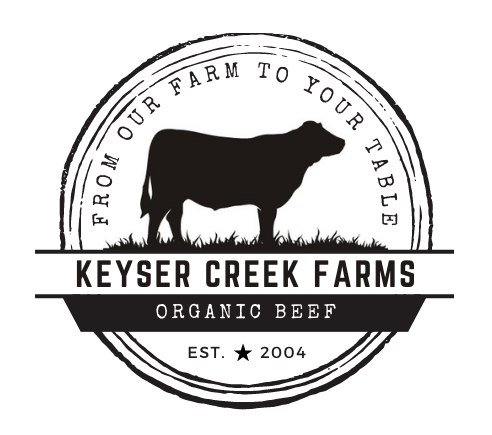You've probably wondered about this too! It's a great question coming from a new customer, and its hugely relevant to the flavour and texture of your meat.
"Hi, I have a question, after the cow gets slaughtered, how long is the meat hanging time? And what’s the purpose? - K."
GREAT QUESTION!
Proper hanging time is actually a fine art of finding the balance between concentrating the flavour of the beef, while keeping the internal moisture. Makes sense if we think about our ideal steak experience, right? We all want a nice steak that is full of flavour, but still tender and juicy!
With our local butcher, the sides of beef are cut and hung in a cooler for 14 days. The temperature is typically just above freezing, and the hanging period has various effects on the meat that are all designed to help make the meat more tender and flavourful.
- After slaughter, muscle fibres in the meat naturally shorten and tighten – potentially making the meat tough and chewy. By cooling the carcass quickly, this process can only get so far, and the muscles stay elongated and more relaxed and tender.
- During the aging process, enzymes start breaking down proteins and connective tissue in the meat which creates a more tender texture in your cuts. The longer the beef hangs the more tender the beef becomes. (Some specialty butchers will dry age beef for months... but this is extremely expensive! There's a balance that the farmer, butcher, and customer come to in terms of quality and price)
- The cooling and hanging process solidifies the fats within the meat and helps establish good marbling.
Good marbling is considered one of the highest indicators of quality meat, and delivers a soft texture that is full of flavour. Marbling in beef is comprised of monounsaturated fats – these are “good fats” that help our body decrease cholesterol levels, reduce join inflammation, reduce the risk of heart disease… just to name a few amazing health benefits (but that’s a whole different write-up!)
-
Dehydration. While the meat is hanging, the constant air circulation helps dehydrate the meat. This has a two-fold benefit.
First, it concentrates the flavour of the meat by removing moisture.... the meat is not as "watered down".
The second benefit is particular to freezer beef. When beef is frozen, the water particles inside the muscle tissue crystalize and puncture the cell walls. When you thaw out your cuts, the remaining moisture can leach out leaving you with beef that is dry and tough. Dehydrating the beef reduces this effect to keep your cuts juicy and full of flavour.

Naively, I used to think:
"Don't all the processing plants do it this way?!" I didn't even know there were other ways to age beef...
Would it surprise you to learn that many processing plants actually age their beef in plastic bags for a significantly shorter period of time? This is much more cost effective for the chain stores (they can move product faster), and they actually don't want to dehydrate the meat because customers pay per pound, right? Why sell better beef when they can just sell you more water?!?!
GOOD NEWS: IT DOESN'T HAVE TO BE THAT WAY!!!
Lots of our customers are surprised by the more "meaty" or “beefy” flavour of our cuts... proper hanging time at the butcher is a big reason why!

